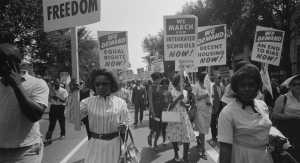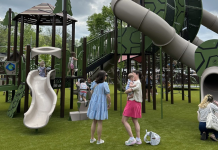
In January 1951, the United Nations opened its New York City headquarters as a safeguard against future global conflicts. Four months later the Birmingham City Council passed this series of Segregation Ordinances in direct opposition to that spirit of peace:
- Section 369: Outlaws restaurants that serve both black and white diners, unless they construct a solid vertical partition—with a stipulated minimum height of seven feet—and separate entrances
- Section 597: Outlaws the mixing of races in any table games or sports
- Section 859: Outlaws any performance or public space that does not have separate entrances, exits, and seating areas for black and white patrons.
- Section 1002: Outlaws any transportation service that equally serves both black and white customers
You get the idea. If you want to learn more, this document is one of hundreds of exhibits at the Birmingham Civil Rights Institute.
What is the Birmingham Civil Rights Institute?
This museum, an affiliate of the Smithsonian Institution, uses its exhibits to share the events of civil rights history, many of which took place in our state. The Birmingham Civil Rights Institute (BCRI) has been educating and engaging the community for over 30 years, its mission is to “enlighten each generation on civil rights and human rights by exploring our common past and working together in the present to build a better future”. The BCRI staff drives this mission with dozens of special events throughout the year, like the following:
- public performances of song, dance, and poetry
- book discussions
- walking tours at Kelly Ingram Park
- a reenactment of the Children’s March of 1963
- free admission days
You can hear about these events in the BCRI email newsletter; this is one email that I’m actually excited to receive!
Visit Details
The BCRI website‘s “Visit Us” tab shares information on Tour & Bookstore Hours, Visitor Policies, and Admission rates. Adult tickets are $15, while Senior, College Students, or children 4th grade and above are $13. Children 3rd grade and under are free!
The BCRI is open Tuesdays through Saturdays from 10:00 a.m. to 5:00 p.m. No food or drink is allowed, and the building is fully accessible to all visitors. A bookstore at the exit sells art, clothing, and a fabulous assortment of books.
What Is the Museum Like?
The BCRI breathes life into the history of the fight for civil rights in America. The amount of information that is artfully displayed is simply enormous; it may take several hours or multiple trips to get the full experience. Some of the most impactful exhibits I recall from my visits include:
- “Separate But Equal” doctrine—comparing white and black school classrooms
- Rosa Parks & the Montgomery Bus Boycott
- Birmingham nicknamed “Bombingham”
- Freedom Riders
- Martin Luther King Jr.’s Birmingham Jail Cell
- Timeline of desegregation
The tour has exhibits with audio, visual, and sensory components designed to make you feel immersed in that part of history. One of the incredible things about the BCRI is that its physical location is part of that immersion. Once you step out of the exit doors, to your left is the 16th Street Baptist Church and straight ahead is Kelly Ingram Park. I would recommend planning some time to walk through and read the inscriptions on the statues and memorials nearby as you continue to absorb and reflect on the emotions that this period of history invokes.
Bringing the Kids
Visiting the BCRI with your children can be an excellent way to educate them on the racist attitudes and policies which caused so much suffering in our city, as well as the hard-fought victories that came out of this civil rights movement.
While the BCRI welcomes visitors of any age, I think it’s important to weigh how much a child could get out of the visit with how they might impact the experience of another visitor (or yourself!). Personally, I would bring my first grader but would probably find other arrangements for my younger children ages two and three. If I brought the entire crew, I’m fairly certain I would spend the entire time pulling them off of anything labeled “Do Not Climb”!
My six-year-old, on the other hand, would be able to form some understanding of the civil rights movement from the museum experience. Children learning this history will be challenged to grapple with their feelings. It may help to provide them a notebook with prompts like “What made you angry or sad?,” “What made you proud?,” “If you were a six-year-old during that time, what would you have done?,” and”If I was a mom during that time, what do you think I should have done?”
Drawing back to the mission of the BCRI, I think it’s highly likely that a child would leave with a newfound sense of determination to prevent these wrongs of the past from ever being allowed again, in order to build a better future together.











